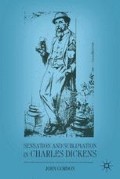Abstract
Michael Slater has remarked Dickens’s way of “telling and not telling the readers about his past,”1 of sharing “his most intimate secrets … but in some coded fashion.”2 A number of the novels featured so much detail about life in real prisons, the Marshalsea in particular, that some readers must have wondered where the author got all that information.3 He put David Copperfield in a close facsimile of the blacking warehouse and scattered blacking references through the rest of his writings. While carrying on with an attractive young woman named Ellen (of all things) Lawless Ternan, he introduced into his last novel an attractive young woman named Helena Landless. Paying the rent for Miss Ternan’s hideaway, he sometimes used his first name “Charles,” sometimes went by the last name “Turnan.”4
Access this chapter
Tax calculation will be finalised at checkout
Purchases are for personal use only
Preview
Unable to display preview. Download preview PDF.
Notes
John Gordon, Physiology and the Literary Imagination: Romantic to Modern (Gainesville: University Press of Florida, 2003), 87–88.
Terry Castle, The Female Thermometer: Eighteenth Century and the Invention of the Uncanny (New York: Oxford University Press, 1995), 43–61.
William Blake, “The Human Abstract,” The Poetical Works of William Blake, edited by John Sampson (New York, Oxford University Press, 1916), 106.
Copyright information
© 2011 John Gordon
About this chapter
Cite this chapter
Gordon, J. (2011). Afterword: Having It Both Ways. In: Sensation and Sublimation in Charles Dickens. Palgrave Macmillan, New York. https://doi.org/10.1057/9780230119697_6
Download citation
DOI: https://doi.org/10.1057/9780230119697_6
Publisher Name: Palgrave Macmillan, New York
Print ISBN: 978-1-349-29343-8
Online ISBN: 978-0-230-11969-7
eBook Packages: Palgrave Literature CollectionLiterature, Cultural and Media Studies (R0)

